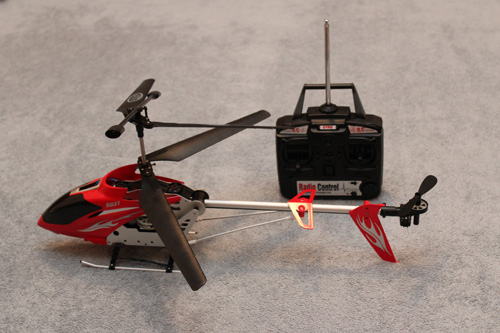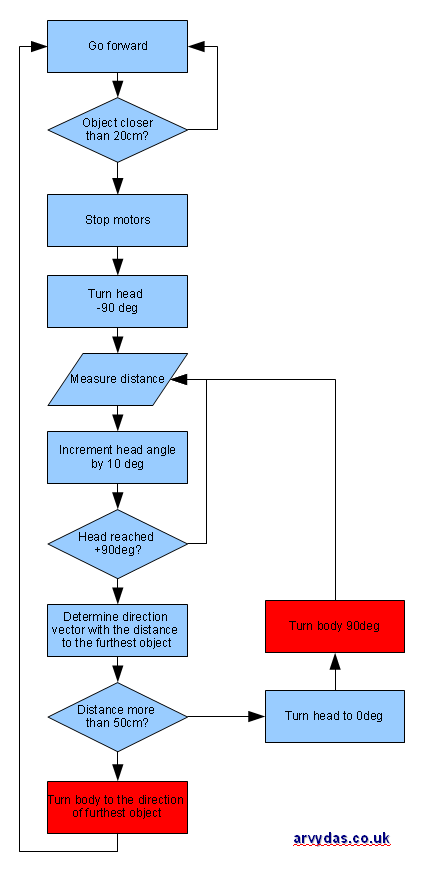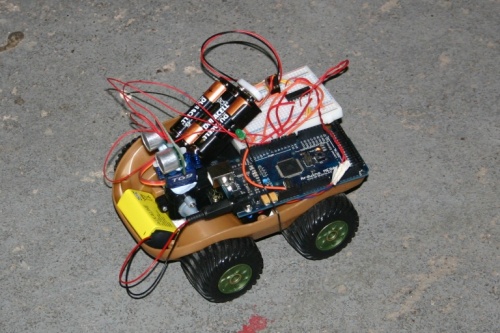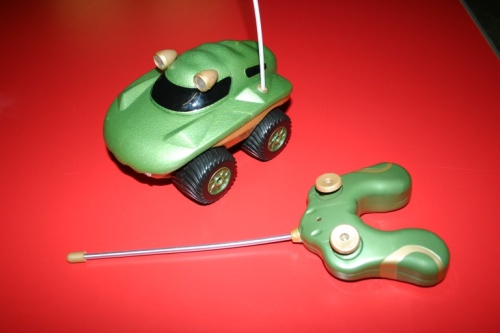
A few weeks ago I found this boxed Syma S031G helicopter in a ModelZone store on a special shelf where they are selling broken or otherwise non working gadgets. There were more of those broken helicopters for sale, but they were in a range of £30 and were listed as having RC transmitter problems or other faulty parts. It wouldn’t have made sense buying one without investigating if repairs wouldn’t even cost more than a new heli retailing for £59.99 at the same store (or 30% cheaper on eBay). Mine only had a handwritten sticker “broken” stuck to it and a price of £9.99. A quick inspection through the box didn’t show any signs of significant damage and shop assistant was kind enough to let me open the box and check if it had all parts. Transmitter, charger, heli, instructions and even spare rear propeller was in the box so I decided to take the risk and bough it.


